You can refer DC Fuse as a device that breaks up the circuit whenever the amount of current exceeds a specific value. Doing so, a DC Fuse ensures protection for various electronic appliances.
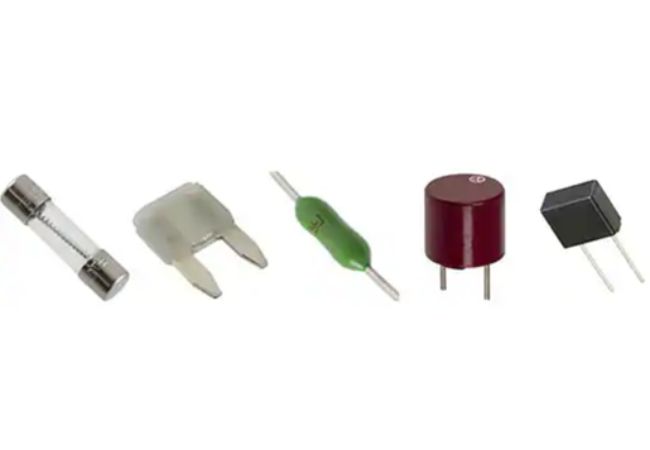
Working Mechanism of DC Fuse
The DC Fuse has a direct connection with the circuit. Both of the DC Fuse terminals are connected in series. When the higher amount of current flows, due to the lower melting point fuse element starts to heat up.
The heat successively increases above the point where the fuse element completely melts and breaks the connection with the circuit. The connection breakage stops the current from flowing through the course. If this happens, the only solution is to replace the damaged DC Fuse with the newer one.
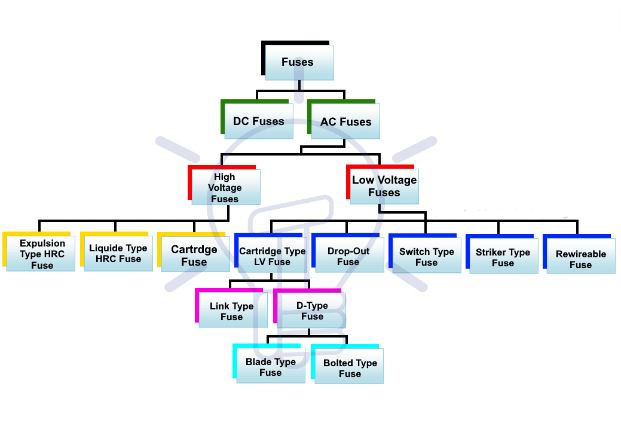
Wiring Diagram of DC Fuse
DC Fuse generally comprises the power source or battery that supplies current. The switch’s function is to turn it on or off the circuit. After passing through the fuse, the recent moves towards the load or specific electrical appliance. Below wiring diagram of the DC Fuse will completely clear the concept.
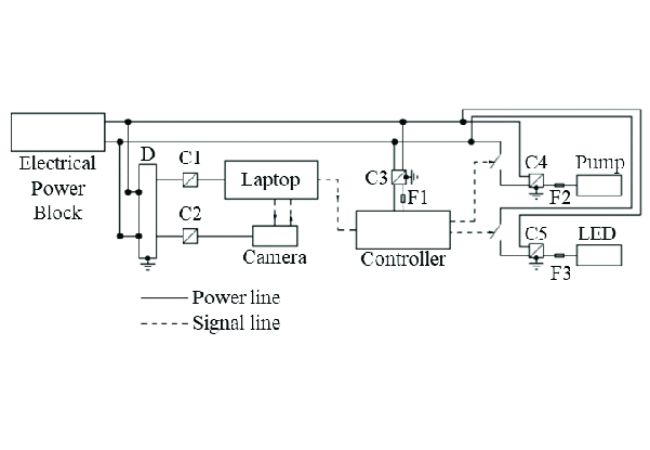
DC FuseFeatures
Some compelling features of the DC Fuse are:
· Excellent Dissipation of Heat
The elements or materials of the DC Fuse feature construction in a way that they resist heat buildup. Regardless of the time you are operating your circuit or devices, it remains cool. This, in turn, reduces the chances of occurrence of potential damage.
· Wide Ampere Range
A wide range of ampere ratings means you can get your DC Fuse in any rating you want. You can choose one just depending on the DC circuit’s current requirement. The DC Fuses available can cope with higher or lower current DC Circuits. There is no limit on options when it comes to DC Fuse.
· Better Arc Extinction
The arc extinction you can define as the ability of the DC Fuse to extinguish any arc completely. This especially occurs when the interruption of the current takes place by a fuse. This ultimately prevents the burning or firing of the circuit. That it also ensures the system’s safety and performance.
· Good Mechanical Performance
Another feature that is worth noting is the overall mechanical performance. The DC Fuse is completely able to bear and withstand high-stress and challenging situations. You can rely on your DC Fuse regarding demanding mechanical performance.
Types of DC Fuse
Various types of DC Fuse exist. Get highlights on key types in the following section:
Cartridge Fuse
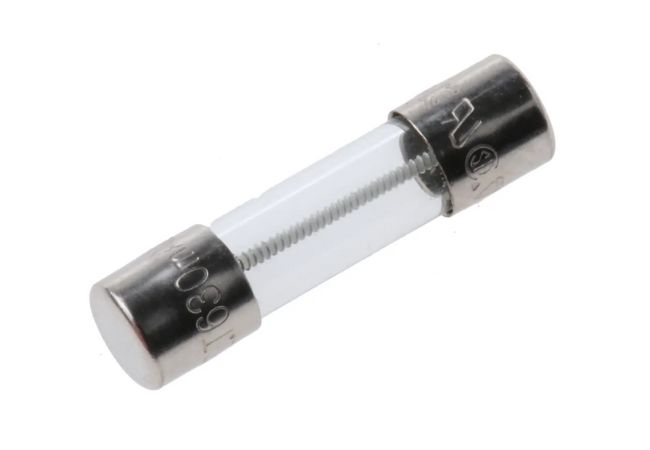
In this fuse type, the fusing element lies within the glass tube. On both ends, there exist brass metal caps. Since the glass is highly transparent, you can easily see through the fuse element.
The cartridge fuse comes in two variants. These include slow-blowing fuse and fast-blowing fuse. The slow-blowing fuse consists of thick elements, while the large-blowing fuse comprises the thin fusing component.
The cartridge fuses capable of withstanding higher voltage levels feature an oil or a sand fill. At the same time, the cartridge fuse that is capable of withstanding higher temperatures features ceramic encasing.
Automotive Fuse
As the name suggests, automotive fuses are specifically suitable for automotive systems. They feature a blade form and a covering of clear plastic having color. This color varies. You can utilize automotive fuse, especially in higher power circuits. Automotive fuse has a voltage range of 32V up to 42V.
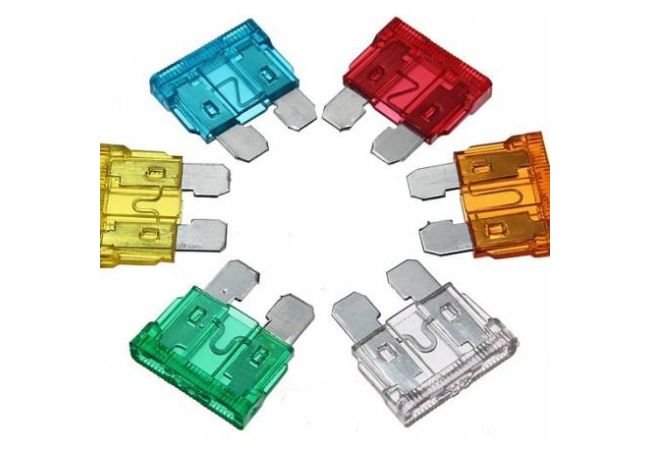
Resettable Fuse
As the name reflects, the resettable fuse can self-reset. Resettable fuse comprises carbon black that features insertion in organic polymers. The carbon black is what adds up to conductivity. When the amount of current exceeds a specific value, organic polymer results in expansion. This expansion rises until the distance becomes too much so no more current can flow through the circuit.
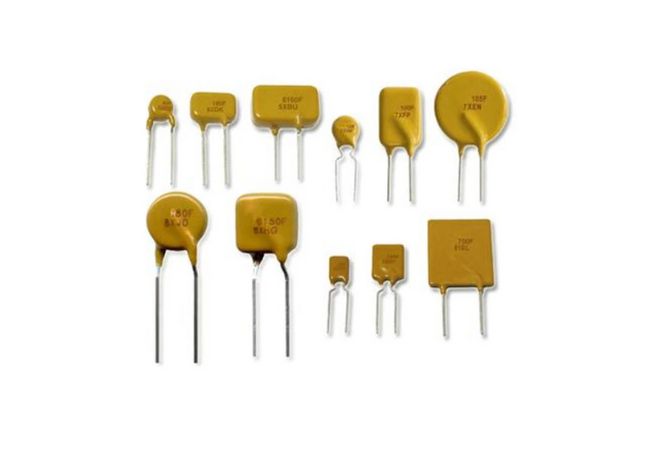
When the temperature again comes to a certain lower value, the carbon particles again come closer. Thus, preventing you from replacing the fuse. Another name for these fuses is PTC (positive temperature coefficient).
You can get these PTCs in any current rating you want. The popular variants include green color with white marks, black with gold marks, etc.
Semi-Conductor Fuse
The semiconductor fuse refers to the fuse that responds to smaller current rises. As the current flow rises, the power dissipation increases as well. These fuses are also referred to the ultrafast fuses. You can effectively protect the devices that possess semiconductor switches.
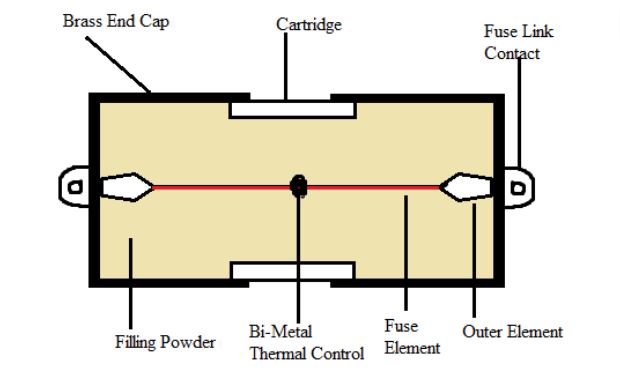
Over Voltage Suppression
Overvoltage is something undesirable when it comes to circuits. The over-voltage suppression device plays a great part in this regard. (Negative Temperature coefficient) NTC is your only go-to solution. These fuses feature higher desirability because of adaptability with the devices that suppress over voltage and current.
Difference Between DC Fuse and AC Fuse
Several differences exist when it comes to DC Fuse or AC Fuse. The key differences for your concern include the following:
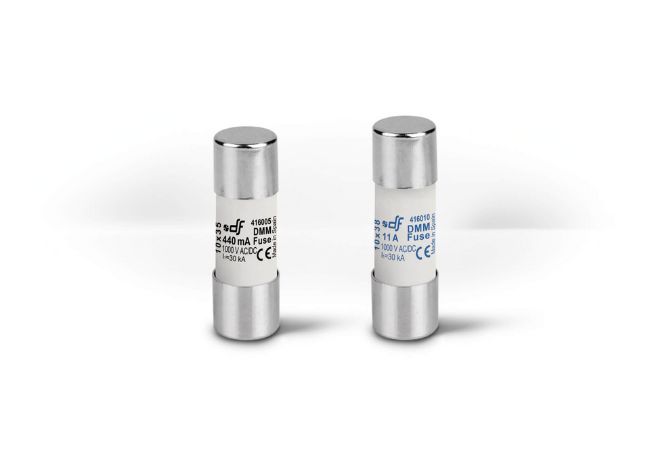
Sizing
The AC voltage rises and falls to maximum and minimum almost 60 times in seconds. Stopping the AC (alternating current) is relatively easier than DC. The electrode spacing in AC voltage is relatively low. A smaller space is enough to control the current effectively.
On the other hand, direct current does not go or change frequently multiple times. You cannot interrupt the DC Circuit at ease. This is because DC Circuit produces an arc when experiencing an opening. Therefore, this is why the spacing between the electrodes in DC Fuse is higher than in AC Fuse. This is why the DC fuse size is larger than the AC fuse size.
Fusing Element
The fusing elements of the DC circuit are copper, lead, or aluminum. At the same time, the fusing component of the AC circuits is copper, tin, or silver.
Voltage
The DC fuses are popular as low voltage fuses. This is mainly because their voltage ranges from a few millivolts to 600 volts. The popular variants are 12 Volts, 24 Volts, and 48 Volts. The specialty of the DC low voltages makes them suitable for AC applications as well.
The AC fuses are suitable for higher voltages. These volts refer to the 100,000 volts up to the 300,000 volts. Such fuses contain special materials or gases which can lead to effective arc extinguishing.
Suppression Element
When the fuse blows, it produces an arc. You need to incorporate materials that can suppress these arcs. It will help if you put the insulator for circuit breakage in DC fuses that assist the high-power usage. For lower voltage usage, you can use silica as an insulation material. When the temperature rises, the insulating material melts and disconnects electrodes effectively.
You can use liquids or gases as the suppression element in AC fuses. This is true, especially for higher voltage applications. Whenever the fusing element experience a failure, they suppress any arc formation and prevents the circuit.
Considerations For Better Selection Of DC Fuse
The things that need your attention for a better purchase of DC Fuse include:
Ambient Temperature
Ambient temperature refers to the temperature of the surrounding air of the fuse. The key things contributing to this temperature include heat dissipation components of fuse and resistors.
This is why the ambient temperature is greater than the room temperature. Consider this aspect as higher ambient temperature lead you to experience lower fuse life and vice versa.
Rated Current
The rated current refers to the wind a fuse can carry under normal conditions. As per the standards of IEC, the normal fuse can carry 100% of the rated current. The better fuse limits the exceeding of the rated current.
This enhances the life of the DC fuse. For instance, the DC fuse with a current rating of 100 A. You cannot operate it above a current of 75 A and an ambient temperature of more than 250 C.
Rated Voltage
A good-quality DC fuse disconnects the circuit as per the rated current. This is true when the voltage is equal to or less than the voltage rating. Pay attention to this effect to make a better selection.
Pulses
The starter or initial rating pulses significantly influence the different fuse types. Generally, the starting pulse must align with the time curve and the I2 rating. Such fuses play a great part in better protection against overloads.
Acting Time
You can refer to a fusing element’s acting time to melt completely. If the fuse cannot respond to melting as the current exceeds, it can pose a danger to your electrical appliances.
Advantages of DC Fuse
The benefits you are going to experience with the DC Fuse are as follows:
Cost Effective
DC Fuse does not require a lot of money. You can protect your valuable electrical possessions by spending just a few dollars.
Improved Safety
DC fuse effectively disrupts the excessive current from the circuit. This way, it protects the courses and covers electrical hazards, substantial fires, and accidents. By utilizing a DC fuse, you can protect yourself from the waste of money and recurring repairs.
Maintenance Free
You don’t need to adopt various maintenance measures when you have a DC fuse. It does not require maintenance at all. Also, you don’t need to spend time or money on calibration and maintenance.
Easy to Operate
You need no heavy knowledge or extra skill to operate your DC fuse. You can install them on your circuits on the go. The clear marking and guidance for installation will help you with super easy replacement and installation.
Quick Functioning
Another notable aspect of the DC Fuse is its super quick functioning. Quick responses to the higher current circumstances are what make it highly desirable. This way, it greatly contributes to minimizing downtime and potential loss.
Main Components of a DC Fuse
The main parts of the DC fuse which play a great role include:
Fusing Element
The prime component of the DC fuse is the fusing element. It comprises a metal having a lower melting point. Its main function is to transfer the current across the circuit safely. In case the current exceeds the normal value. The resistance goes on increasing and causes the melting of the fusing element.
Brass End Cap
Brass acts as a conducting material and is present on both ends of the fuse. It helps you connect with the circuit ad the fuse effectively. The selection of brass is mainly because of its high durability and conductivity. With clamping or wiring, you can easily set up contacts.
Filling Material
The term filling in filling material refers to your need to fill the space between the fusing element and the contacts. You can use any material, such as silica sand, chalk, quartz, etc. This material melts and ensures disconnection. This material is mainly suitable for resettable fuses.
Applications of DC Fuse
The following section will highlight the main usage areas of the DC Fuse. Keep exploring:
PCB Mounting
The term PCB refers to Printed Circuit Boards. The DC fuse in PCB ensures complete protection of the inner elements of the circuit. You can directly mount the DC fuse on PCBs and prevent excess current flow.
High Power Circuits
The higher power circuits, such as those in the industrial sector, require the utilization of the DC fuse. Some renewable energy systems also require the usage of the DC Fuse. Electric vehicles are another example of the applications of the high-power DC fuse.
Power Supplies/Mobile Charger
The mobile charger and power supplies utilize the DC fuse as an essential component. This way, the DC fuse protects the charging devices and power supplies by limiting the excess current.
Aerospace Devices
Reliability and safety are paradigms, especially in aerospace devices. This is mainly because of the higher cost association. Here. DC fuse plays a critical role by preventing electric fires, overcurrent, etc. You can utilize this device in satellites, aircraft, and aerospace.
Semi-Conductor Switching Devices
You can use the DC fuse in semiconductor switching devices such as IGBTs, transistors, etc. By installing the DC fuse, you can ensure these devices’ effective and efficient operation.
Causes of Failure of DC Fuse
Consider the following causes of failure of your DC Fuse:
· Overload
When your DC fuse experiences a very high current, above its normal limit. This refers to an overload. You can experience this mainly because of multiple devices or appliance connections. This exceeds the current rating and leads you to DC fuse failure.
· Short-circuit
The short circuit occurs only when a minimum resistance direct path is established in the circuit. In such circumstances, more current passes through the electric circuit. This generates heat, melts the fuse element, and breaks the current flow.
· Ground Fault
The ground fault occurs when a conducting element directly contacts the grounded surface. This also happens when insulation gets damaged, leading to uninterruptible electric connections. In this fault, the higher current passes through the fuse, above its capacity. Thus, tending towards the DC fuse failure.
· Wrong Fuse
The wrong usage of the DC fuse or improper fuse can also lead to DC fuse failure. You cannot use the low current rating fuse for higher current or vice versa. This way, you will experience higher heating as well as potential damage.
· Arc Fault
The arc fault occurs because of unintended current discharge between two conductors. These arcs ultimately contribute to higher temperatures and energy. This eventually leads to the fuse failure.
· Frayed Cords
The frayed or damaged cords are a major risk, especially a leading cause of ground faults or short circuits. In case frayed cords come in contact with any conductive surface. It will trigger the DC fuse failure.
Conclusion
The DC fuse is a critical component when it comes to electrical safety. You can enjoy complete protection from fire hazards, accidents, damaged appliances, etc. It possesses impeccable importance in today’s age and compatibility with many applications.
This article has helped you know the DC Fuse insights, whether you are a pro or a beginner. Still have any concerns feel free to reach out or put your thoughts in the comments. Quality assistance is what you get instantly.


